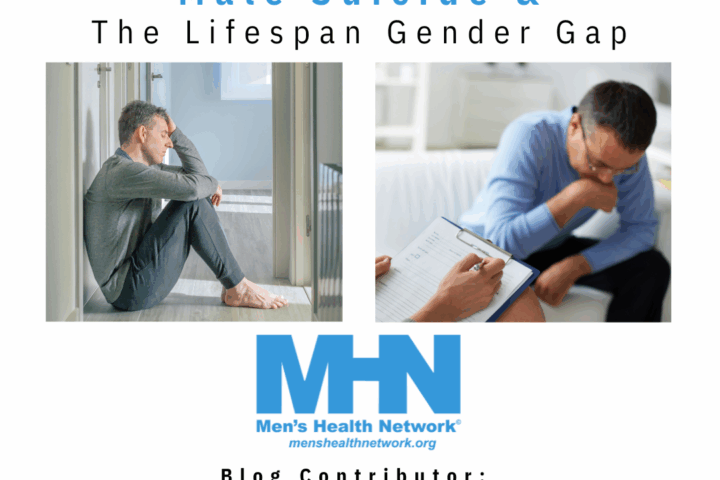Most people know that men live shorter (by five years), less-healthy lives than women. They’re more likely to be the victim of a violent crime, die in a car crash, commit suicide, and be injured at work. Men also have higher death rates from nine of the top ten killers, are more likely to be uninsured, and far less likely to receive routine preventative care. Hundreds of thousands of men die from preventable causes. Millions more have chronic illness, injury, disability that could have been prevented
With so much attention being paid to healthcare these days, one would expect that men’s unique health issues would be on the front burner. Sadly, they’re not even on the stove at all. Since the social justice argument (“We need to do everything we can to save and improve the life of every American”) doesn’t seem to move people to action, perhaps we need to consider the state of men’s health from a more self-interested perspective.
The simple fact is that ignoring men’s health costs the Federal government and the private sector more than $320 billion per year. To clarify, that figure isn’t what it would cost to completely eliminate men’s health problems—it’s just to get men as healthy as women. Here’s how that $320 billion breaks down.
Tax revenues. If you’re not working (or even alive), you’re not paying income tax. Using US Census Bureau statistics for the difference between the number of men and women alive and employed (1.2 million), estimated annual salary ($50,000), and average net tax burden (9.2 percent by employees, 7.65 percent by employers), men’s premature death costs Federal, state, and local governments over $9 billion a year.
Caring for the uninsured. Men account for over 55 percent of the unemployed. Unemployed people are less likely to have insurance and often put off medial treatment until it’s too late. The Institute of Medicine estimates that the total cost of caring for uninsured Americans ranges from $65 billion to $130 billion. Taking 10 percent of that (the difference between men’s and women’s shares) yields $6.5 to $13 billion per year.
Poverty in widowhood. Compared to elderly married women, elderly widows are five times more likely to live in poverty. The Federal government incurs a total of $127 billion a year on expenses directly relating to men’s poor health and premature death. That includes payments for Social Security disability and survivor benefits, Medicare and Medicaid for low-income widows, and food stamps.
That’s over $142 billion. Every year. And we’re just getting started.
The Centers for Disease Control tracks a statistic that measures years of potential life lost. They estimate that there are 3.6 million more years of life lost in the U.S. by men than by women (9.17 million versus 5.56). Most researchers estimate the value of one year of life (it’s a terrible way to look at the world but it’s a necessary calculation) at between $95,000 and $297,000. Using just $50,000 per year, we see that men’s premature death costs no less than $180 billion every year.
Even using the low end of ranges, the total is over $320 billion—$1,000 for every man, woman, and child in this country. Every year.
So what’s the solution? There’s no one silver bullet, but we know we need to start taking seriously health issues specific to men. Step one is to eliminate the disparity between spending on men’s and women’s health. There was a time when most studies were done solely on men, but that was long ago. The National Institutes of Health estimates that it will spend $3.76 billion on women’s health, including $778 million on breast cancer and $95 million on cervical cancer. In contrast, the NIH expects to spend just $337 million on prostate cancer—about 40 percent of breast cancer spending—despite the fact that prostate cancer kills nearly as many men every year as breast cancer kills women.
Step two is to create and fund a Federal Office of Men’s Health. Currently there are at least eight Office of Women’s Heath on the Federal level, with combined budgets in the tens of $ billions. There is not a single office of Men’s Health anywhere in the Federal government. Anywhere.
Over the past 20 years, advocates for women have done an amazing job giving visibility-and funding—to women’s health. As a result, millions of women’s lives have been saved and millions more have been improved. It’s high time we did the same for men.




Comments are closed.